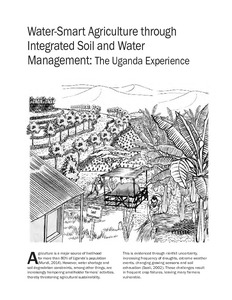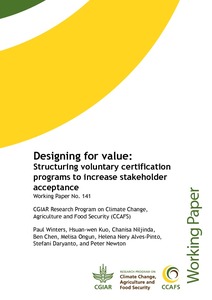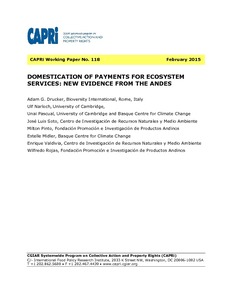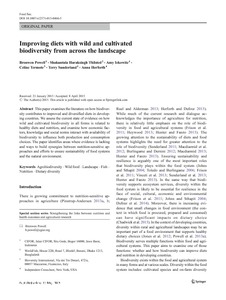Conserving soils: Water-smart agriculture through integrated soil and water management: The Uganda experience
Designing for value: Structuring voluntary certification programs to increase stakeholder acceptance
Voluntary certification programs are one type of intervention used to incentivize the commodity agricultural sector in tropical forest landscapes to reduce deforestation and improve sustainability. These programs encourage supply-chain actors to produce and source products according to agreed standards. We review the cases of the Roundtable on Sustainable Palm Oil (RSPO) voluntary certification program in Indonesia, and the Sustainable Agriculture Network (SAN) voluntary certification program for cattle in Brazil.
Domestication of payments for ecosystem services: new evidence from the Andes.
The current project has sought to assess i) the potential of agricultural biodiversity-focused PES to serve as a cost-effective and socially equitable domesticated diversity conservation incentive scheme, as well as ii) how economic incentive mechanisms such as PES can be designed to build on and complement local institutions of collective action. Results are presented from pilot Payment for Agrobiodiversity Conservation (PACS) schemes and framed field experiments implemented in the Bolivian and Peruvian Andes aimed at sustaining diversity within quinoa, a traditional Andean grain.
Effects of salinity and drought on early seedling growth and survival of Artemisia herba-alba
Seedlings of Artemisia herba-alba grown in glasshouse were watered with differing salinities (0, 150, 250 or 350 mM NaCl) and watering frequencies of 3, 7, 14 or 21 days for a period of 6 weeks. At the end of the study, plant survival, dry matter yield, biomass allocation (shoot and root), leaf area, relative growth rate (RGR), net assimilation rate (NAR), specific leaf area (SLA) and leaf area ratio (LAR) were recorded. When watered with 0 mM NaCl, Artemisia herba-alba plants had similar (P> 0.9) final dry matter weight and 100% survival regardless of watering frequency.
Expanding sustainable land management in Ethiopia: scenarios for improved agricultural water management in the Blue Nile
Deforestation due to farmland expansion, fragile soils, undulating terrain, and heavy seasonal rains makes the highlands of Ethiopia vulnerable to soil erosion. The diverse terrain of the rural highlands requires spatially explicit investments in land management structures. This paper utilizes recent hydrological and meteorological data collected from the Mizewa watershed in the Blue Nile Basin of Ethiopia, as well as household survey data on farmer preferences and investments, in order to better understand the physical impact of sustainable land management activities.
Improving diets with wild and cultivated biodiversity from across the landscape
This paper examines the literature on how biodiversity contributes to improved and diversified diets in developing countries. We assess the current state of evidence on how wild and cultivated biodiversity in all forms is related to healthy diets and nutrition, and examine how economic factors, knowledge and social norms interact with availability of biodiversity to influence both production and consumption choices.








